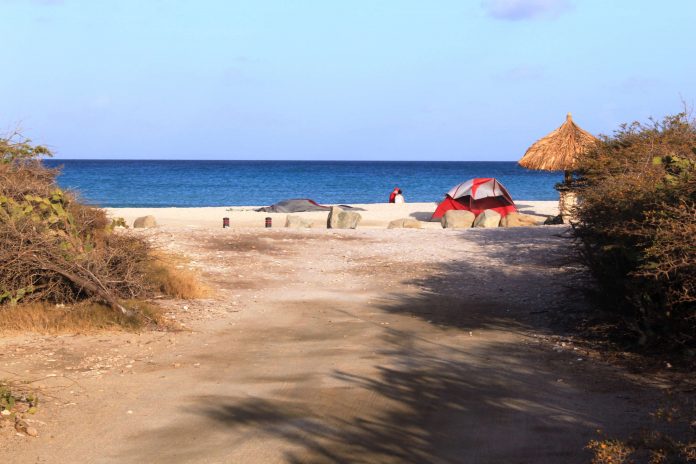Destination values, native heritage, and cultural identity are what we advocate for in our own way of safeguarding all reasons to love this island. Etnia Nativa, through this cultural blog, “Island-Insight,” shares native cultural awareness, educates, and safeguards Aruba’s heritage. It is how we encourage you to experiment with your stay with an island-keeper’s state of mind.
This tiny tourist destination has thousands of years of history. Its first visitors were people from the Paleolithic period, who arrives to our island by dugout canoes about 12,000 years; however, very little has been left behind by these people to indicate this claim by those lacking a untrained eye, As most of what these hunter-gatherer groups have used and left behind was organic in composition and degrades in a very short period of time.
Paleo burial sites were discovered inland and in a high-salinity terrain within a short distance from the sea at Malmok area. The high salinity ground has much contributed to the preservation of teeth and bones. Other artifacts discovered of these people were items made out of stone, such as tools, projectile points, fire hearth stone and artifacts made of seashells.
Aruba’s Shell Midden sites are usually found within 50 meters of the sea, mostly on the South and western coasts. They are generally made out of sand, pieces of conch, mussels, oysters, rounded stones and pebbles. Middens are also found within shores of estuaries and sea inlets but predominate near sandy beaches. Many shell middens also contain fish, bird, reptiles and mammal bones, prehistoric ceramic shreds and colonial artifacts mixed within the debris as well as pieces of charcoal and other debris used in food preparation.
Middens dating from the ceramic agricultural and early European period of history are often very similar to earlier middens, since such middens were used by various cultures during a prolong period of time covering different time periods. So these sites may also contain glass, crockery, metal and bones of none native or introduced animals such as sheep, goats, cattle, pigs Etc. These historic middens are found wherever there has been a historic settlement made where there used to be a native settlement. The largest Middens are often in places where hotels or other modern activities are taking place today, like those at the developed coastal areas and a particular one at Arashi, which has been the focal point of our columnist for many years.
He has written many letters to our Department of Culture, the Minister of Culture, Chief of Police, etc., mentioning the need to protect this historical shell Midden. Some thirty years ago, he finally got the attention of D.O.W. (the Department of Public Works), who closed the makeshift entrance to the site by placing some two-ton boulders, preventing campers, motor vehicles, ATVs, and UTVs from reaching, parking, or riding over the Middens. However, after 10 years of protection, tour operators moved these stones, and today one of these Middens has almost completely disappeared while nobody cares. Yes, it is so sad to see that every weekend and camping season more and more of this particular Midden is being destroyed and eroded by public irresponsibility.
WHAT IS A MIDDEN? ‘Midden’ is an old English word for a household rubbish dump, and this is the meaning used by archaeologists. Middens are places where food remains, such as shellfish and animal bones, ash and charcoal from fires, and broken or worn-out tools were thrown away, dumped, or buried. Middens can be of Paleolithic hunters and gatherers, Caquetios, or European origin. Middens are one of the most common kinds of archaeological sites found in Aruba.
Intrigued by Aruba`s origins and its cultural heritage? Then we encourage you to do something outside of the tourist grid. Become one of the exclusive visitors of Etnia Nativa, a private residential encounter set up, where you will be able to touch and be touched by authentic Aruba heritage, a spectacle of native art, archaic as well as archaeological artifacts, lithic tools, colonial furniture, and other items of the island’s bygone era. Get inside a recycled environment full of peace, relaxation, knowledge, and information.
Etnia Nativa is, since 1994, the home of Anthony, our acclaimed columnist, artist craftsman, and island Piache, who guides and lectures you through his resplendent collection. E.N. is the only place that recreates and introduces you to an authentic glimpse into Aruba’s native cultural heritage and its colonial footprint. Something completely different for a change—a contemporary Native Aruba experience!
Appointment is required + 297 592 2702 or etnianativa03@gmail.com

















